Trump's Tariff Policy Towards China: Analysis of the Latest Changes and Future Outlook
- Ghibli AI Generator
- Ghibli Style
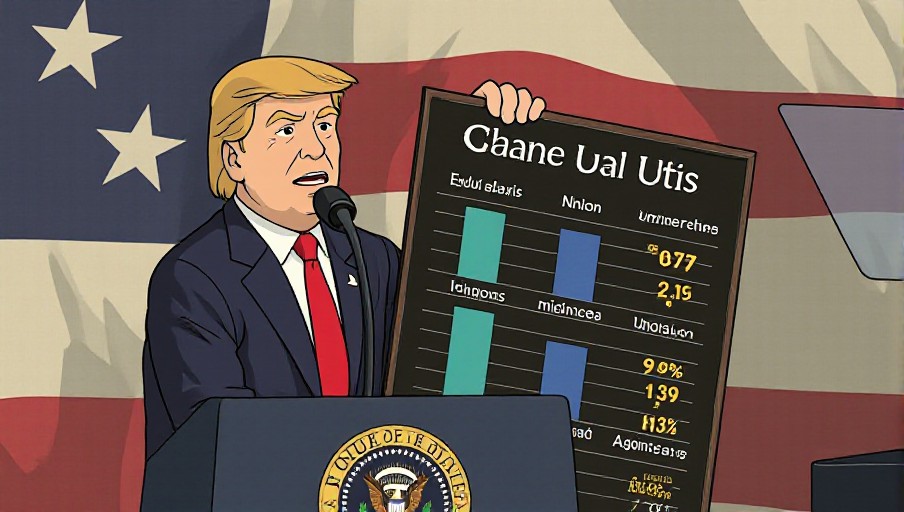
Made with the Dreamface Ghibli filter
Since President Donald Trump took office, the United States tariff policy has been a focal point of global trade disputes, particularly the high tariffs imposed on Chinese goods. Trump's administration implemented these tariffs with the aim of reducing the U.S. trade deficit, protecting American manufacturing, and advancing his "America First" agenda. However, in 2025, Trump announced a new shift in his tariff policy, increasing tariffs on Chinese imports to 125% while suspending other tariffs. This change has prompted global markets and governments to reassess the potential implications of his policy. This article explores the latest changes in Trump's tariff policy towards China, examines the underlying motivations, and discusses possible future outcomes.
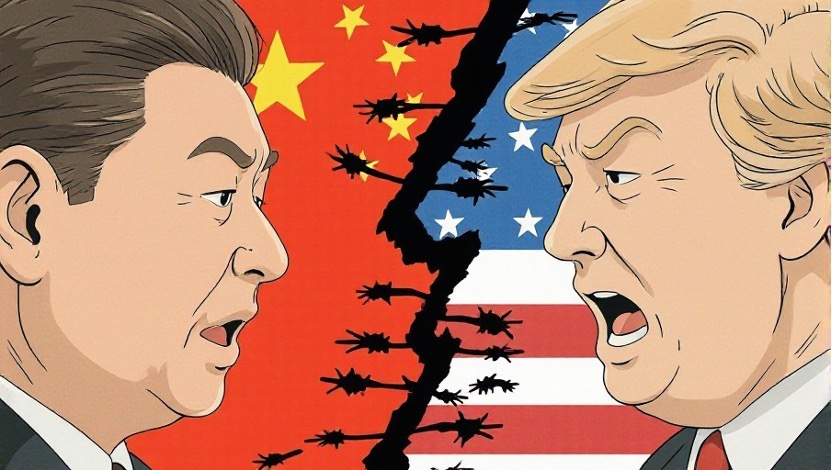
Made with the Dreamface Ghibli filter
"Volume up, diplomacy down."
Trump and Xi’s tariff standoff is less negotiation, and more yelling across a crack in global trade.
1. Latest Changes in Trump's Tariff Policy Towards China
On April 2, 2025, President Trump announced an increase in tariffs on Chinese imports to 125%, while suspending the implementation of certain other tariffs. This move is seen as a significant shift in Trump's approach to China, signaling that the U.S. demands further concessions from China in trade negotiations. In addition, on April 4, 2025, the Chinese Ministry of Finance announced that, effective April 10, 2025, all U.S. goods imported into China would be subject to an additional 34% tariff, a retaliatory measure in response to the U.S. tariff increases. These new tariff policies have further escalated trade tensions between the two countries and created significant uncertainty in global markets.
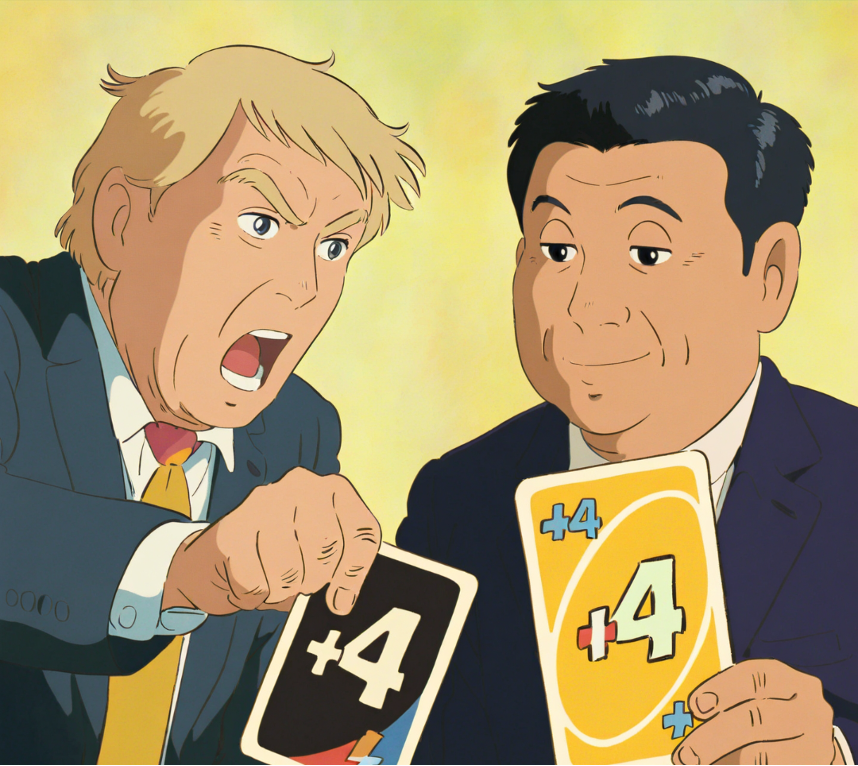
Made with the Dreamface Ghibli filter
These tit-for-tat tariff hikes resemble less a negotiation and more a heated game of UNO.
Trump: “+4 Tariffs!” Xi: “+4 Right back!”
As tensions escalate, the world watches a trade war that feels increasingly like an international card match — but with real economic consequences.
This isn’t just UNO games — it’s your wallet, your next iPhone, your grocery bill.
Fast facts:
- $1,200 → Estimated annual cost increase per U.S. household due to tariff-related price hikes
- 58% → Percentage of U.S. electronics that depend on Chinese components
- 3.1% → IMF’s revised global trade growth forecast, down from 4.6%
2. The Motivations Behind the Tariff Policy
Several factors lie behind Trump's tariff policy towards China. First and foremost, the U.S. has long faced a trade deficit with China, and Trump has sought to address this imbalance by imposing tariffs, hoping to force China into making trade concessions. Trump has consistently advocated for "America First," believing that tariffs would protect U.S. manufacturing and create jobs, especially in industries reliant on imports.
Secondly, Trump's decision may also be influenced by increasing domestic economic pressures. As global economic uncertainties rise and U.S. financial markets experience volatility, the Trump administration may have realized that the tariff policy has not delivered the expected results. The imposition of high tariffs has increased costs for U.S. consumers and businesses, contributing to rising inflation and slowing economic growth. This may have prompted a reassessment of his tariff strategy.
Finally, the reactions of other global economies also played a role in influencing the shift in U.S. policy. As the world's second-largest economy, China's retaliatory tariffs have had a direct impact on U.S. exports, exacerbating trade tensions and posing risks to the broader global economy. The Trump administration may have recognized that relying solely on high tariffs was not yielding the desired outcomes and that a policy adjustment was necessary.
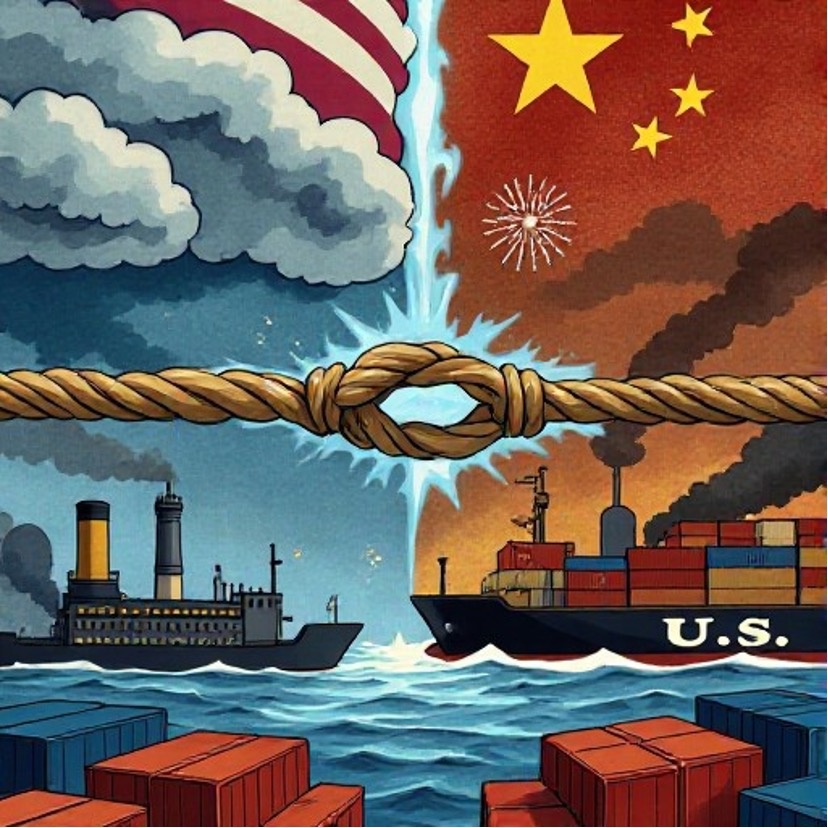
Made with the Dreamface Ghibli filter
“Bound by trade, divided by tariffs.”
3. Short-Term and Long-Term Impacts of the Tariff Policy
Short-Term Impact
In the short term, Trump's tariff policy towards China is likely to have significant consequences for the global economy. First, the global stock market may experience considerable volatility due to the uncertainty surrounding the policy, with investors concerned about the escalation of the trade war. Second, U.S.-China trade relations are likely to worsen further, with tariffs imposed by both sides affecting exports and economic growth. U.S. consumers and businesses will also face higher prices, particularly in areas like electronics and consumer goods, where the costs of imports are rising due to tariffs.
Long-Term Impact
In the long term, Trump's tariff policy may lead to profound changes in the global trade landscape. If the tariffs continue, other countries may seek to reduce their dependence on the U.S. market by pursuing alternative trade partners. Specifically, China may look to increase trade with emerging markets and developing economies, reducing its reliance on the U.S. market. For the U.S., the long-term persistence of tariffs may result in a relative decline in its global economic influence, particularly in the context of increasing globalization.
Moreover, the reconfiguration of global supply chains in response to tariffs could result in higher production costs, affecting both U.S. businesses and consumers. Over time, this could undermine the global competitiveness of American industries.
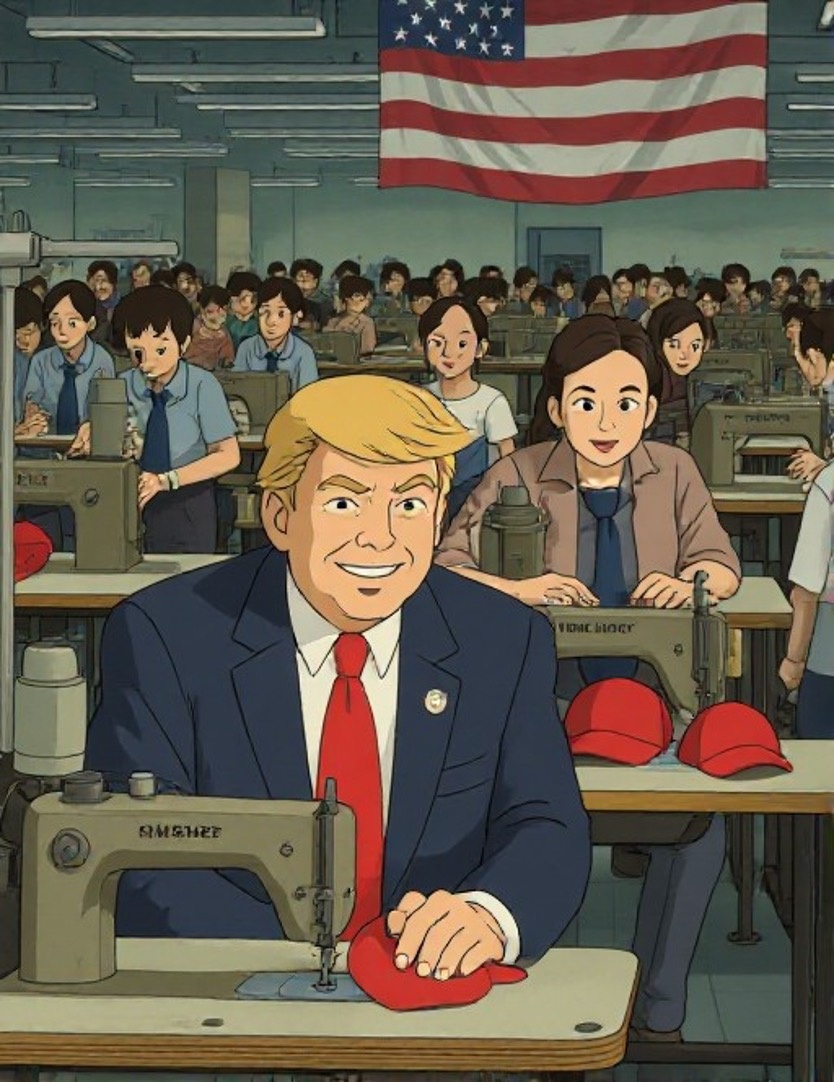
Made with the Dreamface Ghibli filter
Long-term tariffs might bring you a hat stitched by your president… but the price tag will make you miss "Made in China”.
Dreamface: More Than Just Filters — It’s Visual Journalism
At Dreamface, we don’t just help you create pretty portraits — we help you turn the news into something you can feel.
Our Ghibli-inspired “News Drama” filter transforms serious headlines into cinematic moments. Whether it's economic turmoil, global showdowns, or viral trends, Dreamface lets you reimagine reality in a way that's emotional, artistic, and instantly shareable.
Why just read the news when you can visualize it?
And yes — that includes turning Trump’s latest tariff drama into a meme-worthy masterpiece.
How to get access to the DreamFace:
https://tools.dreamfaceapp.com/generator
Visit DreamFace to upload your Trump’s tariff drama memes and pictures to share on social media, and maybe it will go viral on the Internet! Alternatively, download the mobile app for on-the-go access!
5. Conclusion
Trump's tariff policy towards China remains fluid, and while short-term impacts are likely to continue influencing global trade, the long-term direction of the policy will depend on a variety of factors. The most likely outcome is that Trump will adjust his tariff policy through negotiations, gradually reducing tariffs as part of a broader trade agreement. However, it remains uncertain whether he will fully abandon the tariff approach, especially given domestic political pressures and global economic instability. Ultimately, the future of U.S.-China trade relations will depend on the evolving global economic landscape, the outcomes of trade negotiations, and the shifting priorities of the Trump administration.
- X
- Youtube
- Discord



